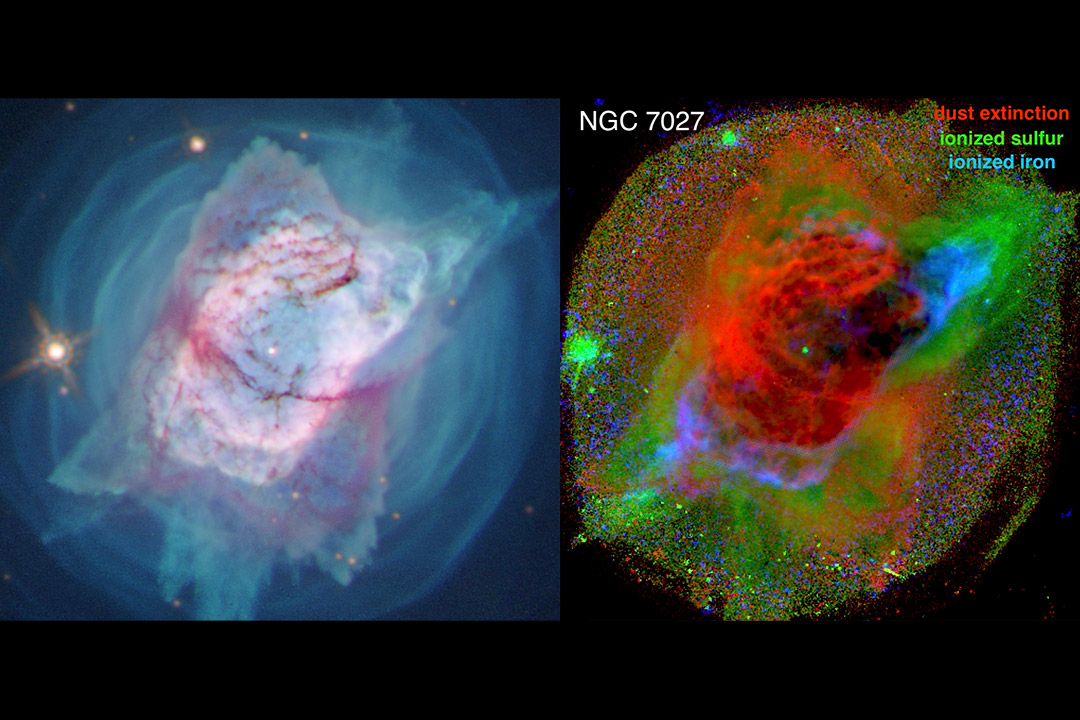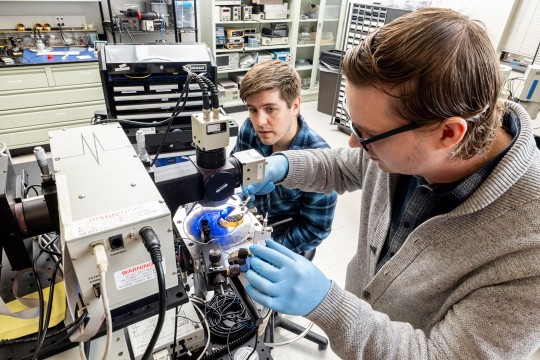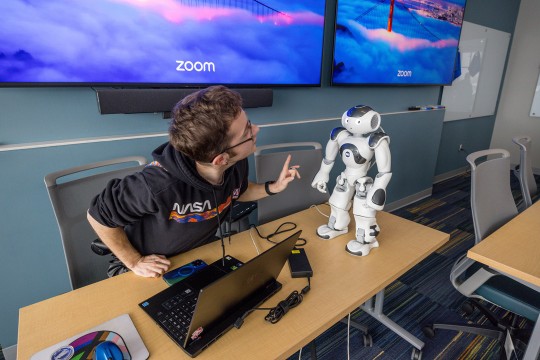RIT scientists to study molecular makeup of planetary nebulae using radio telescopes
NSF provides Professor Joel Kastner a three-year, $339,362 grant to lead the study
STScI, Alyssa Pagan; P. Moraga (RIT) et al.
On the left is an image of the Jewel Bug Nebula (NGC 7027) captured by the Hubble Space Telescope in 2019 and released in 2020. Further analysis by researchers produced the RGB image on the right, which shows extinction due to dust, as inferred from the relative strength of two hydrogen emission lines, as red; emission from sulfur, relative to hydrogen, as green; and emission from iron as blue.
By using radio telescopes to study sun-like stars in their death throes, scientists hope to reveal important information about the origin of life-enabling chemicals in the universe. The National Science Foundation is awarding a $339,362 Astronomy and Astrophysics Research Grant to a team led by Rochester Institute of Technology Professor Joel Kastner to conduct such a study.
Planetary nebulae are the remnants of stars roughly one-to-eight times the size of the sun surrounded by hot gas lit up by ultraviolet radiation. Kastner hopes that through a comprehensive campaign of observations using radio telescopes, the team can capture a snapshot of the process by which stars enrich the universe in molecules containing carbon and oxygen.
“This study will get at that question of where did the building blocks of life come from?” said Kastner, a professor in RIT’s Chester F. Carlson Center for Imaging Science and School of Physics and Astronomy. “Planetary nebulae are where you see that material as it’s being ejected from dying stars and before it winds up getting incorporated into newly formed stars and planets. Radio observations allow us to determine the detailed chemistry of that gas as it’s about to go back out into space.”
The researchers will study planetary nebulae using various international radio astronomy facilities including the Atacama Large Millimeter Array (ALMA), the 30-meter telescope operated by the Institut de Radio Astronomie Millimetrique, and the 100-meter telescope at Green Bank Observatory. Kastner said the team will study the Jewel Bug Nebula (NGC 7027) and about a dozen other similarly molecule-rich nebulae. Last year, Kastner and his team announced new insights gained by studying such nebulae using the Hubble Space Telescope.
“Molecule-rich planetary nebulae like NGC 7027 are also particularly interesting and important subjects for future observations with the James Webb Space Telescope,’’ Kastner said.
The three-year grant will provide funding to support astrophysical sciences and technology Ph.D. student Paula Moraga and another student to be determined, plus help fund a postdoctoral researcher. Kastner said the group’s collaborators include Jesse Bublitz ’20 Ph.D. (astrophysical sciences and technology), now a postdoctoral researcher at Green Bank Observatory, and astronomers at institutions in Grenoble, France, and Madrid, Spain.








